Author Photo And Bio
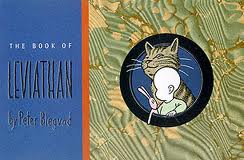 1. The Book of Leviathan by Peter Blegvad (2001). Snappy puns, clever palindromes, stream of consciousness insights, and brilliant non sequiturs fill the dialogue bubbles of this surreal collection of comic strips that chronicle the epistemological adventures of a faceless baby named Leviathan, his wise pet Cat, and his favorite toy Bunny. Sigmund Freud, Emily Dickinson, and St. Augustine are among the luminaries whose words inform these tales that explore the world’s mysteries and absurdities through a child’s eyes.
1. The Book of Leviathan by Peter Blegvad (2001). Snappy puns, clever palindromes, stream of consciousness insights, and brilliant non sequiturs fill the dialogue bubbles of this surreal collection of comic strips that chronicle the epistemological adventures of a faceless baby named Leviathan, his wise pet Cat, and his favorite toy Bunny. Sigmund Freud, Emily Dickinson, and St. Augustine are among the luminaries whose words inform these tales that explore the world’s mysteries and absurdities through a child’s eyes.
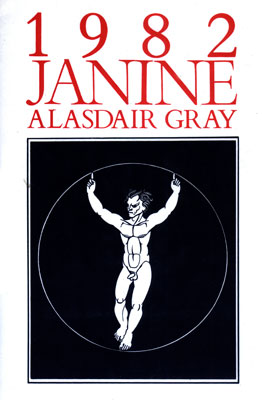 2. 1982, Janine by Alasdair Gray (1984). In a fleabag Scottish motel, divorced and depressed, Jock McLeish once again seeks consolation and strength through massive doses of alcohol and sadomasochistic sexual fantasies (some starring a woman named Janine). Through frank, complex language Gray takes us inside the addled mind of a powerless man seeking to impose some control over his life.
2. 1982, Janine by Alasdair Gray (1984). In a fleabag Scottish motel, divorced and depressed, Jock McLeish once again seeks consolation and strength through massive doses of alcohol and sadomasochistic sexual fantasies (some starring a woman named Janine). Through frank, complex language Gray takes us inside the addled mind of a powerless man seeking to impose some control over his life.
 3. Blood Meridian: Or the Evening Redness in the West by Cormac McCarthy (1985). D. H. Lawrence famously remarked that the archetypal American hero was a stoic, a loner, and a killer. Cormac McCarthy’s tale of the formation and dissolution of a band of scalp hunters in northern Mexico in the late 1840s embodies that dire maxim. Led by a soldier named Glanton and a mysterious, hairless, moral monstrosity known as the “Judge,” these freebooters wipe out Indians, Mexicans, and each other amidst a landscape of such sublime desolation one feels it leaching into their very souls.
3. Blood Meridian: Or the Evening Redness in the West by Cormac McCarthy (1985). D. H. Lawrence famously remarked that the archetypal American hero was a stoic, a loner, and a killer. Cormac McCarthy’s tale of the formation and dissolution of a band of scalp hunters in northern Mexico in the late 1840s embodies that dire maxim. Led by a soldier named Glanton and a mysterious, hairless, moral monstrosity known as the “Judge,” these freebooters wipe out Indians, Mexicans, and each other amidst a landscape of such sublime desolation one feels it leaching into their very souls.
 4. The Beans of Egypt, Maine (1985), Letourneau’s Used Auto Parts (1988), Merry Men (1994), a trilogy by Carolyn Chute. These grimly naturalistic novels, set in an inland “world” of house trailers and logging camps, depict the harsh lives and quiet dignity of the rural poor in Maine. The trilogy moves outward: The first novel creates a series of characters that are real grotesques, offering vignettes of adultery, drunkenness, and destroyed dreams. Life gets no easier in the second novel, but Big Lucien Letourneau, who runs an automobile junkyard, displays a rare and generous compassion. The third novel, which has the most political overtones, echoes the legend of Robin Hood to suggest how Egypt, Maine, and her people have been exploited.
4. The Beans of Egypt, Maine (1985), Letourneau’s Used Auto Parts (1988), Merry Men (1994), a trilogy by Carolyn Chute. These grimly naturalistic novels, set in an inland “world” of house trailers and logging camps, depict the harsh lives and quiet dignity of the rural poor in Maine. The trilogy moves outward: The first novel creates a series of characters that are real grotesques, offering vignettes of adultery, drunkenness, and destroyed dreams. Life gets no easier in the second novel, but Big Lucien Letourneau, who runs an automobile junkyard, displays a rare and generous compassion. The third novel, which has the most political overtones, echoes the legend of Robin Hood to suggest how Egypt, Maine, and her people have been exploited.
 5. The Horse’s Mouth by Joyce Cary (1944). Just out of jail, sixty-seven-year-old Gulley Jimson, a fast-talking, derelict painter obsessed with William Blake, works to complete his depiction of the Fall of Man in this wicked comic novel. Jimson is brilliant, irredeemable, and obnoxious. It is impossible not to cheer him on as he refuses to be defeated by the repeated setbacks he brings on himself through his selfish obsessiveness, insults, and thievery in this culmination of Cary’s London trilogy.
5. The Horse’s Mouth by Joyce Cary (1944). Just out of jail, sixty-seven-year-old Gulley Jimson, a fast-talking, derelict painter obsessed with William Blake, works to complete his depiction of the Fall of Man in this wicked comic novel. Jimson is brilliant, irredeemable, and obnoxious. It is impossible not to cheer him on as he refuses to be defeated by the repeated setbacks he brings on himself through his selfish obsessiveness, insults, and thievery in this culmination of Cary’s London trilogy.
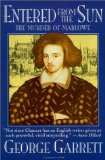 6. Death of the Fox (1971), The Succession (1983), and Entered from the Sun (1990), a trilogy by George Garrett. Packed with conspiracies, intrigues, bright language, and even more colorful characters, these novels enter the mind and mores of late Elizabethan and early Stuart England through dramatic events: Death of the Fox hinges on the rise, fall, and execution of Sir Walter Raleigh in 1618; The Succession re-creates the royal rivalries that surfaced as James I assumed the throne in 1603; Entered from the Sun focuses on the possible political implications of the murder of poet and playwright Christopher Marlowe in 1597.
6. Death of the Fox (1971), The Succession (1983), and Entered from the Sun (1990), a trilogy by George Garrett. Packed with conspiracies, intrigues, bright language, and even more colorful characters, these novels enter the mind and mores of late Elizabethan and early Stuart England through dramatic events: Death of the Fox hinges on the rise, fall, and execution of Sir Walter Raleigh in 1618; The Succession re-creates the royal rivalries that surfaced as James I assumed the throne in 1603; Entered from the Sun focuses on the possible political implications of the murder of poet and playwright Christopher Marlowe in 1597.
 7. Continental Drift by Russell Banks (1985). Working-class New Hampshirite Bob Dubois flees his existence as an oil burner repairman for what he assumes will be a warmer future in Florida. Not far from his new home, but in another social universe, Vanise Dorsinvilles undergoes a much more brutal journey to the sunshine state from her native Haiti. How their fates intertwine is at the heart of this story of the tenuousness of class, fate, and opportunity in a harsh country.
7. Continental Drift by Russell Banks (1985). Working-class New Hampshirite Bob Dubois flees his existence as an oil burner repairman for what he assumes will be a warmer future in Florida. Not far from his new home, but in another social universe, Vanise Dorsinvilles undergoes a much more brutal journey to the sunshine state from her native Haiti. How their fates intertwine is at the heart of this story of the tenuousness of class, fate, and opportunity in a harsh country.
 8. Street of Lost Footsteps by Lyonel Trouillot (1998). Although set during a single night of horrific violence in Port-au-Prince, this fierce, surreal novel resonates with Haiti’s long history of blood and broken dreams. With irony and black humor, three narrators —a madam, a taxi driver, and a postal employee —witness chaotic clashes between forces of the Prophet and the vicious dictator Deceased Forever-Immortal, while reflecting on a society where “you can count yourself lucky . . . whenever you find you’re still alive.”
8. Street of Lost Footsteps by Lyonel Trouillot (1998). Although set during a single night of horrific violence in Port-au-Prince, this fierce, surreal novel resonates with Haiti’s long history of blood and broken dreams. With irony and black humor, three narrators —a madam, a taxi driver, and a postal employee —witness chaotic clashes between forces of the Prophet and the vicious dictator Deceased Forever-Immortal, while reflecting on a society where “you can count yourself lucky . . . whenever you find you’re still alive.”
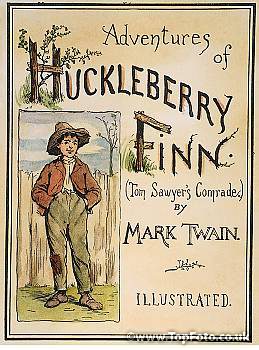 9. Adventures of Huckleberry Finn by Mark Twain (1884). Hemingway proclaimed, “All modern American literature comes from . . . ‘Huckleberry Finn.’ ” But one can read it simply as a straightforward adventure story in which two comrades of conve nience, the parentally abused rascal Huck and fugitive slave Jim, escape the laws and conventions of society on a raft trip down the Mississippi. Alternatively, it’s a subversive satire in which Twain uses the only superficially naïve Huck to comment bitingly on the evils of racial bigotry, religious hypocrisy, and capitalist greed he observes in a host of other largely unsympathetic characters. Huck’s climactic decision to “light out for the Territory ahead of the rest” rather than submit to the starched standards of “civilization” reflects a uniquely American strain of individualism and nonconformity stretching from Daniel Boone to Easy Rider.
9. Adventures of Huckleberry Finn by Mark Twain (1884). Hemingway proclaimed, “All modern American literature comes from . . . ‘Huckleberry Finn.’ ” But one can read it simply as a straightforward adventure story in which two comrades of conve nience, the parentally abused rascal Huck and fugitive slave Jim, escape the laws and conventions of society on a raft trip down the Mississippi. Alternatively, it’s a subversive satire in which Twain uses the only superficially naïve Huck to comment bitingly on the evils of racial bigotry, religious hypocrisy, and capitalist greed he observes in a host of other largely unsympathetic characters. Huck’s climactic decision to “light out for the Territory ahead of the rest” rather than submit to the starched standards of “civilization” reflects a uniquely American strain of individualism and nonconformity stretching from Daniel Boone to Easy Rider.
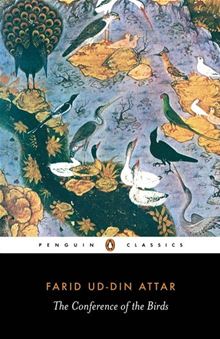 10. The Conference of the Birds by Farid ud-Din Attar. A lyrical tale about the desire to become one with the divine, this epic allegory by the twelfth-century Sufi mystic follows a group of birds who vow to find the legendary Simurgh bird. Their limitations and faults —the basis for rich parables —are revealed through their quest, which has long inspired readers to begin their own spiritual journeys.
10. The Conference of the Birds by Farid ud-Din Attar. A lyrical tale about the desire to become one with the divine, this epic allegory by the twelfth-century Sufi mystic follows a group of birds who vow to find the legendary Simurgh bird. Their limitations and faults —the basis for rich parables —are revealed through their quest, which has long inspired readers to begin their own spiritual journeys.